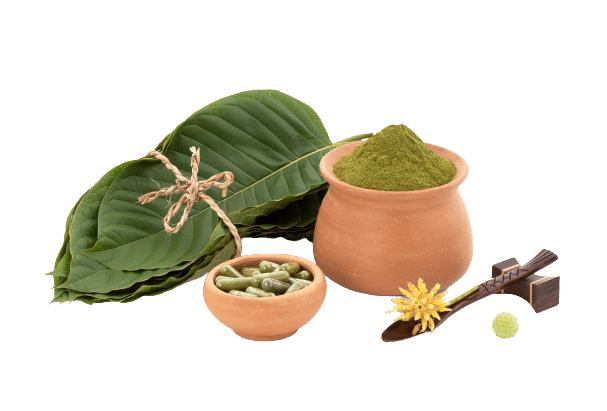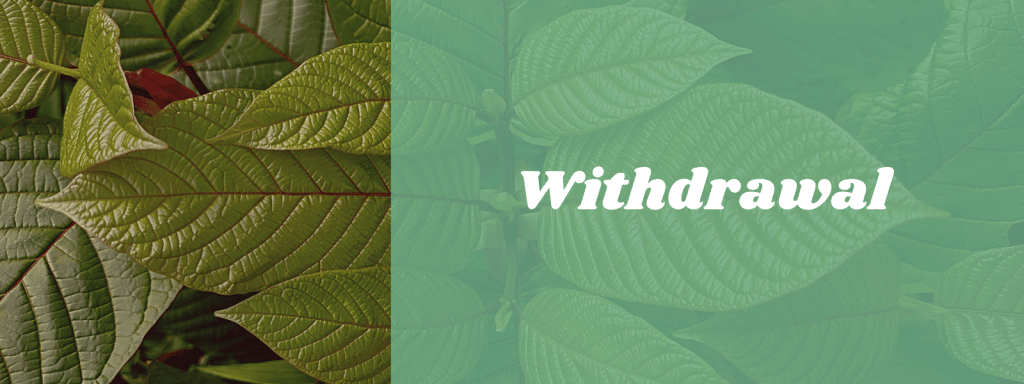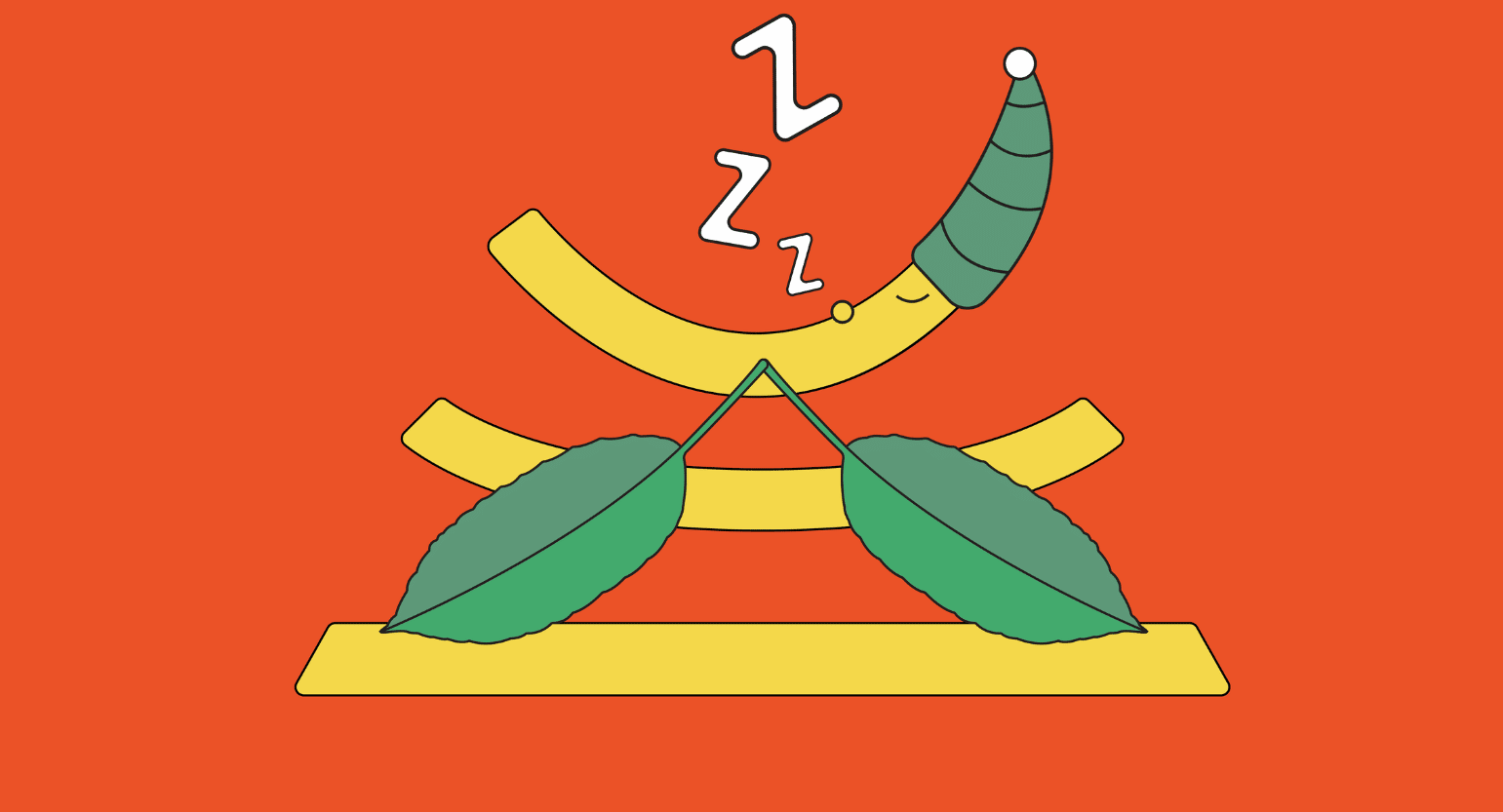Facts & Statistics On Who Uses Kratom & Why
First, we think it’s helpful to frame kratom use and explain how prevalent it has been throughout history and how popular it is today. It’s easy to look at the number of users online discussing the herb and consider kratom use to be prolific. However, understanding how popular it has been in the past can help dispel the myth that kratom use is an “epidemic.”
- Around 1% of Americans over 12 consumed kratom at least once in 2020.
- For comparison, around 0.3% of Americans over 12 reported using heroin in 2020.
- Only around 2.2% of drug users in the U.S. have reported kratom use. For comparison, 57.6% have reported marijuana use, 30.5% have reported MDMA use, and 25.4% have reported cocaine consumption.
- A study done in 2021 determined that approximately 0.2% of children — aged 12 and under — had consumed heroin in the previous year. There are no available statistics for kratom use in children for comparison.
- Lifetime kratom use — long-term — has been reported in just over 11% of kratom users.
- An estimated 58% of all kratom users are female.
- Most routine kratom users have completed some form of a college education.
- The majority of kratom users hold full-time jobs.
- Lifetime kratom use is more common among males and individuals who have not completed education beyond high school.
- Lifetime kratom use is significantly more prevalent among users who also struggle with long-term addiction to opioids.
- Lifetime kratom use is significantly more likely in users who consume kratom beginning from a young age (under 12).
- Kratom use shows some correlation with opioid use, and experts believe this is because kratom is often used to reduce withdrawal symptoms from more addictive opioids like heroin.
- Kratom is most commonly used as a self-prescribed treatment for pain reduction. Around 91% of kratom users report taking kratom, at least partially, to treat pain.
- About two-thirds of all kratom users report taking kratom, at least in part, to treat anxiety or depression.
- While many assume kratom’s most popular use is to help with opioid withdrawal, just 41% of kratom users report this as their primary reason for consuming it.
- Around 87.3% of the kratom users who took kratom to wean themselves off opioids found the herb successful.
Kratom Legality Statistics
Kratom remains mostly unregulated in the United States and throughout the world, although there are, of course, some exceptions. It has been made illegal in several states and countries. The Drug Enforcement Agency (DEA) and the Food and Drug Administration (FDA) are considering making kratom a controlled substance and illegal for consumption.
Below, we’ll include some data about where kratom is legal in the U.S. and other countries.
- Kratom is currently not a controlled substance in America, although it is on the Drug Enforcement Agency’s (DEA) list of drugs and chemicals of concern.
- Only four states — Arizona, Georgia, Nevada, and Utah — have passed Kratom Consumer Protection Act (KCPA) bills, which seek to keep kratom legal for adult users and provide guidelines surrounding its manufacturing and sales.
- Six states — Alabama, Arkansas, Indiana, Rhode Island, Vermont, and Wisconsin — have banned kratom entirely, including its sale, possession, and use.
- Aside from the ten states above, kratom remains unregulated in all other areas in the U.S.
- At least 13 countries have banned kratom entirely, and New Zealand requires a prescription from a doctor for possession and consumption.

Kratom Misuse, Abuse, & Overdose Statistics
Unfortunately, kratom has been a source of drug misuse and abuse, and there is some evidence to suggest that the herb has led to overdoses. However, there is a lot of misinformation surrounding kratom’s risks.
Below, we’ll include some compelling statistics about kratom abuse and overdoses, followed by our conclusions and important things to consider.
- Kratom was determined to be a contributing factor in 0.5% of the fatal overdoses that occurred between 2016 and 2017.
- Around 0.02% of the overdoses reported between 2016 and 2017 were attributed to kratom alone.
- Heroin, in comparison, was a contributing factor in around 33% of those fatal overdoses.
- Of the adults who reported kratom overdoses, an estimated 80% also reported issues with addiction, misuse, and overdoses related to other drugs. These statistics suggest that regular kratom use in otherwise drug-free users may not be as dangerous as some statistics suggest.
- Kratom abuse affected approximately 1.8 million adults aged 26 or older in 2020.
- Most deaths from kratom overdose are also linked to other drugs, with fentanyl accounting for over 65% of them.
- Around 33% of deaths that are at least in part linked to kratom were also linked to heroin.
- Nearly a quarter of the deaths linked at least in part to kratom were linked with benzodiazepine (benzo) abuse. Benzos are another class of drugs commonly used to treat withdrawal symptoms associated with opioids.
- Around 6.1% of people who stop using kratom completely report withdrawal symptoms.
- Around 8.5% of lifetime kratom users who tried to quit found the withdrawal symptoms severe.
- Over 6,800 people in Thailand — where kratom originates from — were treated for kratom abuse in 2017. This was the highest number between 2015 and 2020, with 2020 numbers sitting slightly over 50% of the numbers from 2015.
- Deaths determined to involve kratom use are around three times as likely to occur in males as in female users.
- Substance Use Disorder (SUD) is uncommon among kratom users, despite long-term and repeated use.
- An estimated 23% of individuals who try heroin will become addicted. Compared to the number of kratom users with a SUD — around 2% — heroin is considerably more dangerous and addictive.
What Do These Stats Mean?
Based on the data above, it’s hard to argue that kratom can’t lead to addiction, misuse, abuse, and overdose. However, there are some crucial things to consider when discussing the potential dangers of Mitragyna speciosa.
- Kratom can lessen the withdrawal symptoms associated with cutting out opioids.
- Opioids are considerably more addictive and deadly than kratom; more than 65% of overdose cases are linked to fentanyl, and 33% are related to heroin. To cite kratom as the cause of death in these cases is misleading. The opioids themselves almost certainly led to the overdose, and the kratom was likely being used to suppress withdrawal symptoms.
- Kratom use detection post-mortem isn’t always accurate, so kratom may be linked to more overdose deaths than it is. Still, it’s unlikely that kratom is a significant contributing factor in these overdoses, partly because it’s unlikely to cause respiratory depression.
- According to the research, even the deaths linked solely to kratom could have been partly due to an overdose related to another substance.
- Kratom overdose and abuse correlate with other drug use. Many people use kratom to help wean off opioids, but individuals who use kratom alone are significantly less likely to overdose.
- Kratom use is more common among females, and kratom abuse and overdose are far more common in males, so it follows that kratom use does not always lead to abuse. This is not the case for more addictive drugs like fentanyl and heroin.
To summarize, there seems to be minimal risk for kratom users that aren’t taking recreational drugs or already dealing with a substance abuse problem.

Kratom for Treating Pain
As mentioned above, kratom is most commonly used to treat mild to severe pain, with 91% of all users stating that pain management was at least one reason for consumption. Kratom contains dozens of alkaloids — compounds that have a physiological effect on humans. The alkaloid 7-hydroxymitragynine is linked to kratom’s ability to reduce pain.
Kratom is considered opioid-like in part because it binds to opioid receptors and can interrupt pain signals traveling through the central nervous system [1]. The way it binds to opioid receptors and the strength with which it does makes it distinctly different than opioids, although it can produce even more powerful effects than opioids in some cases [2].
In addition to blocking pain directly, kratom increases the uptake of dopamine, the “feel-good” neurotransmitter [3]. By this mechanism, kratom can help change how pain is perceived, in addition to blocking some of the pain signals altogether.
Kratom is a popular herb for pain relief not only because it mimics opioids but also because it’s significantly less addictive than prescription pain medication.

Kratom for Treating Anxiety & Depression
According to the statistics cited earlier, the second most common use for kratom is treating anxiety and depression.
In addition to affecting how the body deals with dopamine, which can directly affect one’s motivation and outlook on life, kratom can increase the uptake of serotonin, another important neurotransmitter that plays a role in our brain’s reward system [4].
Both dopamine and serotonin are targets of prescription medication designed to treat anxiety and depression, making kratom a good substitute for many people.

Kratom for Opioid Withdrawal
The third most common use for kratom is opioid withdrawal. Kratom mimics the effects of opioids, but it’s reportedly less addicting and carries a lower overall risk of overdose and abuse.
As mentioned above, around 41% of kratom users take the herb to manage opioid withdrawal symptoms. Since kratom acts similarly to an opioid but has a lower risk of addiction, many drug users turn to the herb as a means of weaning off harder drugs like morphine, opium, heroin, and fentanyl.
Kratom works for opioid withdrawal symptoms in a variety of ways. First, it offers pain relief, which is an underlying reason many people turn to opioids in the first place. Second, it increases the uptake of dopamine and serotonin, which can mimic the euphoria and positive feelings many users get from opioids.
Finally, kratom is less addictive than other drugs designed to treat opioid withdrawal symptoms, like methadone. It’s also said to be more difficult to overdose on and is less likely to lead to substance use disorder than prescription alternatives.

Wrapping Up: What the Kratom Statistics Suggest
It’s difficult not to get wrapped up in the internet hype over kratom. For many people — specifically, those looking to wean off opioids — kratom seems like a dream come true. For others, kratom is a dangerous and addictive drug that should be a Schedule I substance along with heroin.
More likely, kratom’s place in society lies somewhere in the middle. Most kratom users — around 98% — don’t have symptoms of a substance use disorder (SUD), and the danger of being addicted to kratom is relatively low.
At the same time, over 40% of opioid addicts find long-term solace and opioid cessation in kratom. The herb is wildly effective in treating pain, anxiety, and depression.
The statistics above suggest that kratom isn’t as dangerous as many people make it out to be, and it can be quite helpful for people who use it responsibly. Of course, abuse and overdose are risks, although this is most prominent in users with long-term substance abuse issues.
Kratom certainly has the potential to be a safe and beneficial substance, and hopefully, the statistics we’ve shared above shed some light on that idea.
- Suhaimi, F. W., Yusoff, N. H., Hassan, R., Mansor, S. M., Navaratnam, V., Müller, C. P., & Hassan, Z. (2016). Neurobiology of Kratom and its main alkaloid mitragynine. Brain research bulletin, 126, 29-40.
- Matsumoto, K., Horie, S., Ishikawa, H., Takayama, H., Aimi, N., Ponglux, D., & Watanabe, K. (2004). Antinociceptive effect of 7-hydroxymitragynine in mice: Discovery of an orally active opioid analgesic from the Thai medicinal herb Mitragyna speciosa. Life sciences, 74(17), 2143-2155.
- Stolt, A. C., Schröder, H., Neurath, H., Grecksch, G., Höllt, V., Meyer, M. R., … & Becker, A. (2014). Behavioral and neurochemical characterization of kratom (Mitragyna speciosa) extract. Psychopharmacology, 231(1), 13-25.
- Johnson, L. E., Balyan, L., Magdalany, A., Saeed, F., Salinas, R., Wallace, S., … & Grundmann, O. (2020). Focus: Plant-based Medicine and Pharmacology: The Potential for Kratom as an Antidepressant and Antipsychotic. The Yale Journal of Biology and Medicine, 93(2), 283.









